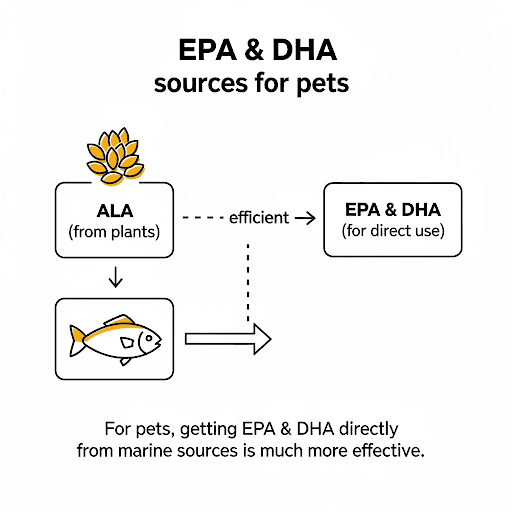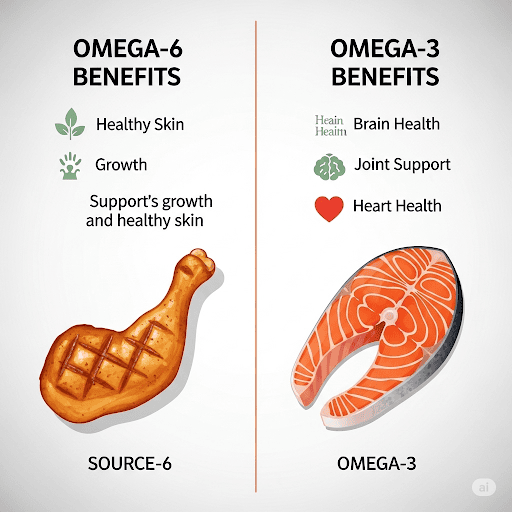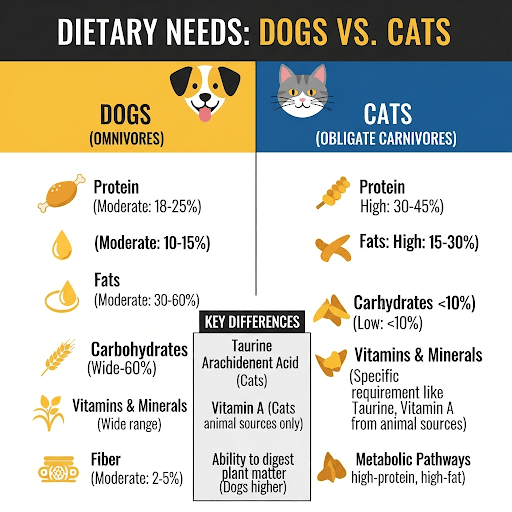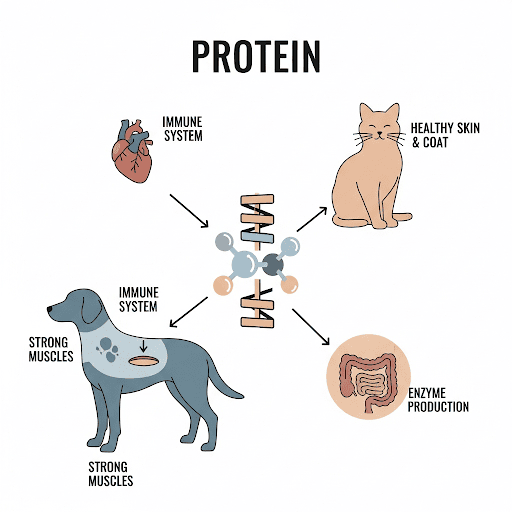There are few things more satisfying than running your hand through your pet’s soft, gleaming coat or watching their bright, intelligent eyes track your every move. This outward picture of health isn't an accident; it’s the result of powerful nutrition working from the inside out. And among the most potent nutrients fueling this vitality are the "good fats"—Omega fatty acids.
You may have heard of fish oil or seen "rich in Omegas" on a pet food bag, but what does that really mean? This guide will dive deep into the world of Omega fatty acids for pets, explaining what they are, the different types, and how they provide the secret sauce for everything from a brilliant coat to a sharp mind.
Meet the Omegas: The Two Sides of the Equation
Omega fatty acids are a type of essential polyunsaturated fat, meaning your pet's body cannot make them; they must come from their diet. They primarily fall into two families that have opposing, yet equally important, jobs.
-
Omega-6 Fatty Acids: Think of these as the body's first responders. Their primary role is to promote inflammation. While "inflammation" sounds bad, a short-term, acute inflammatory response is essential for survival—it’s how the body fights infections and begins to heal wounds. You'll find Omega-6s in ingredients like chicken fat and corn and sunflower oils.
-
Omega-3 Fatty Acids: These are the peacemakers. Their main job is to resolve and reduce inflammation. They are the signal that tells the immune system, "The threat is gone, you can calm down now." This powerful anti-inflammatory action is their claim to fame.
A healthy body needs both. The problem in many modern diets (for both pets and people) is an overabundance of Omega-6s and not enough Omega-3s. This imbalance can lead to a state of chronic, low-grade inflammation, which is linked to numerous health issues. The goal of a well-formulated diet is to strike a healthy, anti-inflammatory balance between the two.
The Power Trio of Omega-3s: ALA, EPA, and DHA
To truly understand the benefits of Omega-3s, we need to get more specific. There are three key types, and they are not created equal.
- ALA (Alpha-linolenic acid): This is the plant-based Omega-3, found in sources like flaxseed, chia seeds, and canola oil.
- EPA (Eicosapentaenoic acid): This is a marine-based Omega-3 with powerful anti-inflammatory properties. It's a key player in supporting joint, skin, and heart health.
- DHA (Docosahexaenoic acid): This is another marine-based Omega-3 that is a primary structural component of the brain and the retina of the eye.
Here's the critical part: while dogs and cats can convert some plant-based ALA into EPA and DHA, they are notoriously inefficient at it. For cats, the conversion is practically non-existent. To get the direct, potent benefits, pets need a diet that includes marine sources—like fish oil or algae oil—that provide EPA and DHA directly. This is one of the biggest benefits of fish oil for dogs and a necessity for omega-3 for cats.
Knowing the difference between ALA, EPA, and DHA is what separates basic nutrition from optimal nutrition. Our meal planner prioritizes recipes that include marine-based Omega-3 sources like salmon oil, ensuring your pet gets a direct supply of EPA and DHA for maximum cognitive and anti-inflammatory benefits.
More Than a Shiny Coat: The Full-Body Benefits
While a glossy coat is the most visible sign of sufficient Omegas, their benefits are truly full-body. A diet rich in EPA and DHA contributes to:
- Shiny Coat and Healthy Skin: They strengthen the skin's barrier function, locking in moisture and reducing the dryness and inflammation that can lead to itching and dull fur.
- Joint Health: The anti-inflammatory power of EPA can help reduce the stiffness and pain associated with arthritis and joint disease.
- Cognitive Function: DHA is literal brain food. It's vital for brain and vision development in puppies and kittens and helps support cognitive function and memory in aging pets.
- Heart Health: Omega-3s support a healthy heart by promoting normal heart rhythms and maintaining healthy blood pressure and circulation.
(The benefits for joints are particularly significant for senior pets and at-risk breeds. Learn more in our article [The Best Foods for a Dog with Arthritis].)

Conclusion: Balancing the Scales for Optimal Health
Omega fatty acids are far more than a supplement for a pretty coat. They are essential fats that govern the body's inflammatory processes, fuel brainpower, and support joint and heart health. The key to unlocking these benefits is providing a diet with a healthy, anti-inflammatory balance of Omega-3s to Omega-6s, with a direct source of EPA and DHA.
Look for diets that include high-quality, marine-based sources of Omega-3s like fish oil, salmon oil, or algae oil. This is one of the simplest and most effective ways to boost your pet's overall wellness from puppy- or kittenhood all the way through their golden years.
Ready to unlock that glossy coat and sharp mind? Ask your veterinarian if your pet could benefit from enhanced levels of Omega-3s. Explore our meal planner to find recipes specifically designed with the optimal fatty acid balance to help your best friend look and feel their best.


